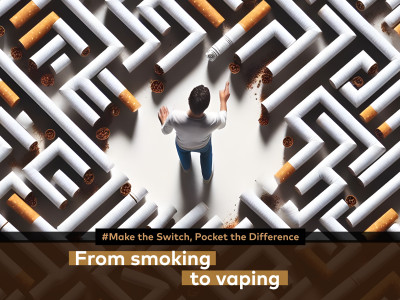David Peyton upset many people over a year and a half ago when his team claimed to have detected large quantities of “hidden” formaldehyde in ecig vapour. It was a study that drew criticism from many quarters – not just for the methodology but also the manner in which the results were portrayed.
Doctor Konstantinos Farsalinos and Clive Bates wrote to the New England Medical Journal explaining why the research should be pulled, but it remains online and open to reference. Farsalinos carried out a repeat of the investigation and came to the conclusion: “Electronic cigarettes produce high levels of aldehyde only in dry puff conditions, in which the liquid overheats, causing a strong unpleasant taste that e-cigarette users detect and avoid. Under normal vaping conditions aldehyde emissions are minimal, even in new-generation high-power e-cigarettes.”
Clearly, Hugo Destaillats of the Lawrence Berkeley National Laboratory hasn’t read Doctor Farsalinos’ work. Destaillats published his team’s findings in the Environmental Science and Technology journal last week, from a study titled Emissions from Electronic Cigarettes: Key Parameters Affecting the Release of Harmful Chemicals.
“This study quantified potentially toxic compounds in the vapor and identified key parameters affecting emissions,” the team wrote. “Aerosols generated with vaporizers contained up to 31 compounds, including nicotine, nicotyrine, formaldehyde, acetaldehyde, glycidol, acrolein, acetol, and diacetyl. Glycidol is a probable carcinogen not previously identified in the vapor, and acrolein is a powerful irritant.”
“These findings suggest that thermal degradation byproducts are formed during vapor generation. Glycidol and acrolein were primarily produced by glycerin degradation. Acetol and 2-propen-1-ol were produced mostly from PG, while other compounds (e.g., formaldehyde) originated from both.”
Destaillats is reported by Motherboard as commenting: “Not all devices are the same, with two coils, the same voltage gets distributed evenly between the coils. Therefore, the amount of heating of each of them is lower.”
But this doesn’t explain his results. In fact it ignores them entirely and attempts to say that vapers ought to be using dual instead of single coils. It is highly suspicious that these new compounds have not been found in previous studies and is indicative of a vaping system being pushed far beyond normal use. Indeed, the study used a mechanical puffing system similar to those derided in the past. Plus, if the investigation was looking at coil temperature being linked to carcinogen production through thermal decomposition then why did he not use a temperature-controlled device (currently used by most advanced vapers)?
It is a shame that this work did not take on board what has been discovered before and move the community’s collective understanding forward.
Dave Cross
Journalist at POTVDave is a freelance writer; with articles on music, motorbikes, football, pop-science, vaping and tobacco harm reduction in Sounds, Melody Maker, UBG, AWoL, Bike, When Saturday Comes, Vape News Magazine, and syndicated across the Johnston Press group. He was published in an anthology of “Greatest Football Writing”, but still believes this was a mistake. Dave contributes sketches to comedy shows and used to co-host a radio sketch show. He’s worked with numerous vape companies to develop content for their websites.
Join the discussion
Parliament Fears Two
The Department for Environment, Food and Rural Affairs faced questions from a Conservative MP and, oddly, a member of the Department for Environment, Food and Rural Affairs
Harm Reduction For The Rich
The United Kingdom risks becoming a harm reduction country only for the wealthy, according to Michael Landl of the World Vapers’ Alliance
Sacrificing Health For 2p Cut
Tory Government alienates vaping voters with its mission to cut tax by an unaffordable 2p to attract voters by placing a tax on vape products in the forthcoming budget
Scotland Announces Single-Use Vape Action
A ban on the sale and supply of single-use vapes in Scotland is due to come into effect on 1 April 2025, under proposed legislation published today












